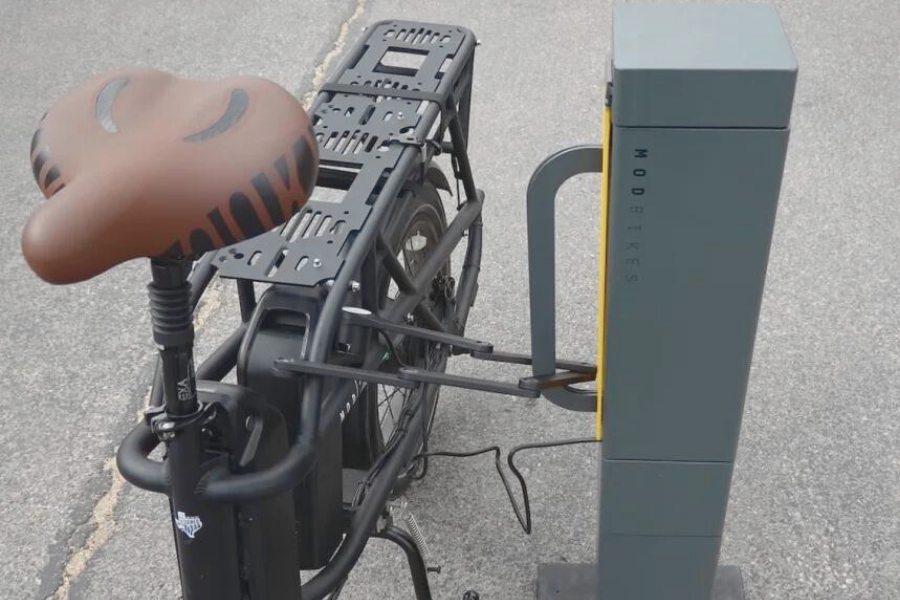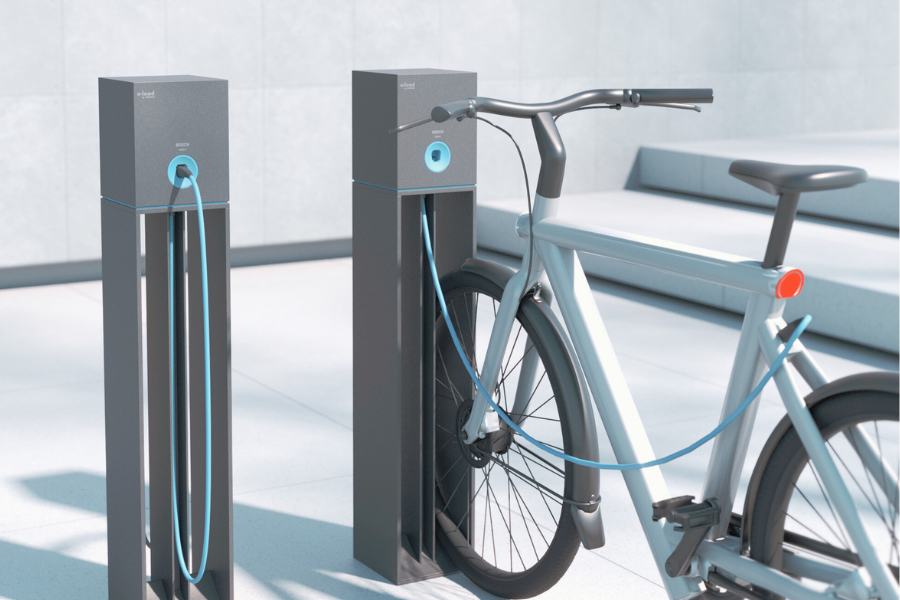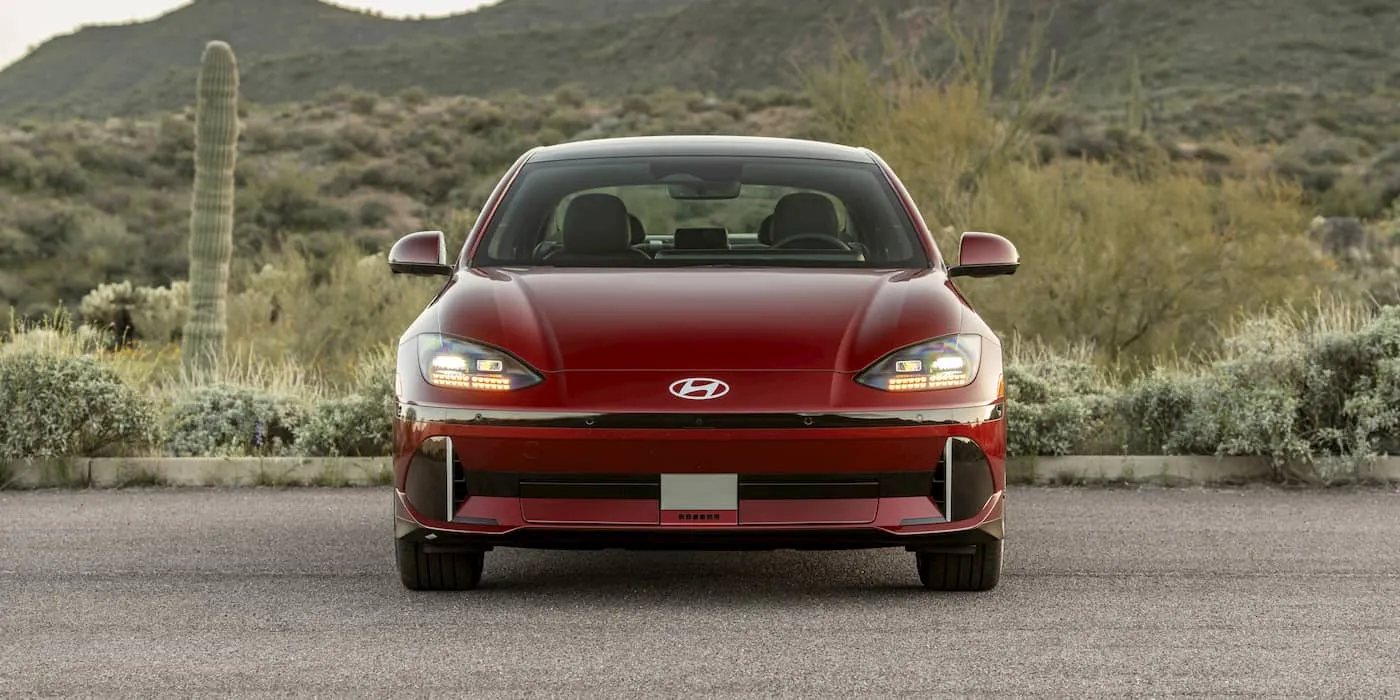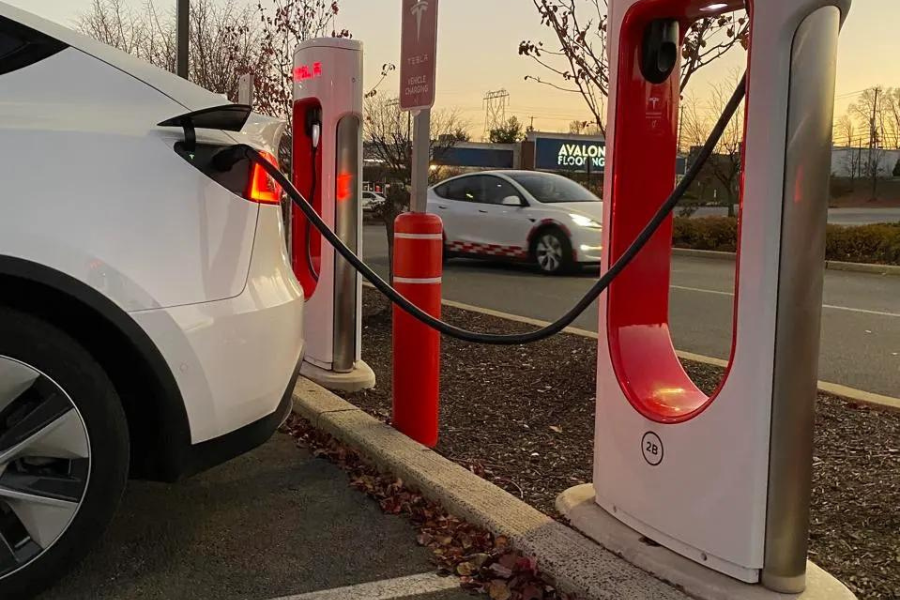The issue of safely charging e-bikes is undoubtedly a growing concern in the US. While media coverage of e-bike fires may sometimes be exaggerated, the risk associated with lithium-ion batteries remains real. Now, a new US-designed charging solution could provide a solution to this problem.
During a visit to Austin, Texas-based electric bike maker MOD Bikes, I came across two different models of e-bike charging stations. The company recently launched several new e-bike models, equipped with impressive features like torque sensors, color displays, and dual battery support. However, amidst these new releases, I discovered a surprising addition in the company’s warehouse: a pair of in-house designed e-bike charging stations.
These patent-pending charging stations offer two divergent yet equally easy-to-install options to address the challenge of safe, secure charging. The first style of charging station is intended for fleet use by MOD Bikes’ customers, such as law enforcement agencies. This primary charging station functions like a multi-pronged charging pedestal, accommodating several bikes using the same charger type. While designed to match MOD Bikes’ batteries, they can be adapted to work with any specific type of e-bike battery, regardless of voltage or connection style.

I learned that Tesla’s Gigafactory in Texas uses a fleet of e-bikes from MOD Bikes for various tasks across the campus, including catering deliveries. This type of charging station is aimed at simplifying the charging process for fleets of similar e-bikes.
The second charging station design offers even more versatility, designed for public use rather than fleet operators. This station not only charges the bike but also locks the charger and/or battery within the unit.
It features a door with a latch that passes over the handle. Opening the hatch reveals a spacious area capable of accommodating an e-bike charger and various styles of e-bike batteries. Additionally, there’s a standard 120VAC electrical outlet inside, making it a BYOC (bring your own charger) setup.
To charge an e-bike, the rider plugs their own charger into the outlet and closes the hatch door. As the latch slides over the handle, locking the bike to the pedestal also secures the hatch closed, preventing theft of the charger. The charger’s wire can exit through a small gap, and the handle provides a secure spot to lock the e-bike.
For instances when the rider wishes to leave the battery but not the bike, such as overnight charging, they can place the entire battery and charger in the unit and lock it with a bike lock.
During my test, the pedestal just accommodated the MOD Bikes charger and battery, but the company assured that they can customize the size to fit larger batteries and chargers.
This solution is ideal for riders who want to avoid leaving their bike outside overnight, making it a tempting target for thieves, yet are unable to bring their battery indoors for charging due to restrictions at many campuses and other areas.

Both solutions require minimal space, approximately 1 square foot, for installation, yet offer significant benefits for those lacking access to charging at ground level or in their residences.
In China, public charging areas for e-bikes are widespread, given their prevalence as a primary mode of daily commuting. These MOD Bikes designs mirror the utility of Chinese models but incorporate increased security measures necessary in most American cities. In China, individuals typically leave their chargers on or near their e-bikes without fear of theft.
MOD Bikes is currently seeking partners to pilot programs for installing these charging stations, tailored for fleet or public use. The company can customize the stations to accommodate different voltage and connector requirements for various e-bikes.
While e-bike adoption is still in its early stages in the US, other countries with high e-bike adoption rates, such as Asia, have already established public charging stations for e-bike batteries as the norm. For instance, in Dizengoff Center, a mall in Central Tel Aviv, I recently noticed e-bike charging lockers that allow riders to deposit and charge their e-bike batteries while shopping. Though different in style and secured by a user-generated combination rather than a bike lock, these lockers serve the same purpose of providing a safe charging location for the public.




